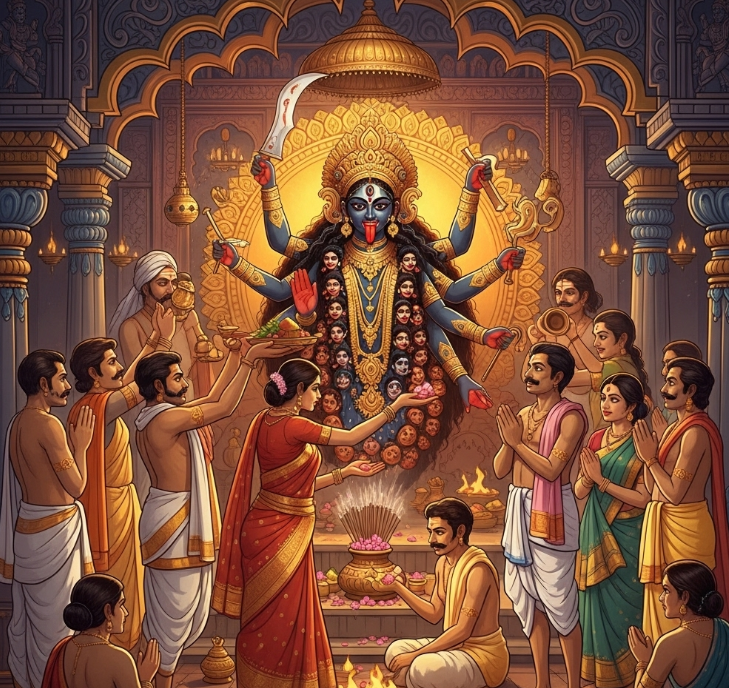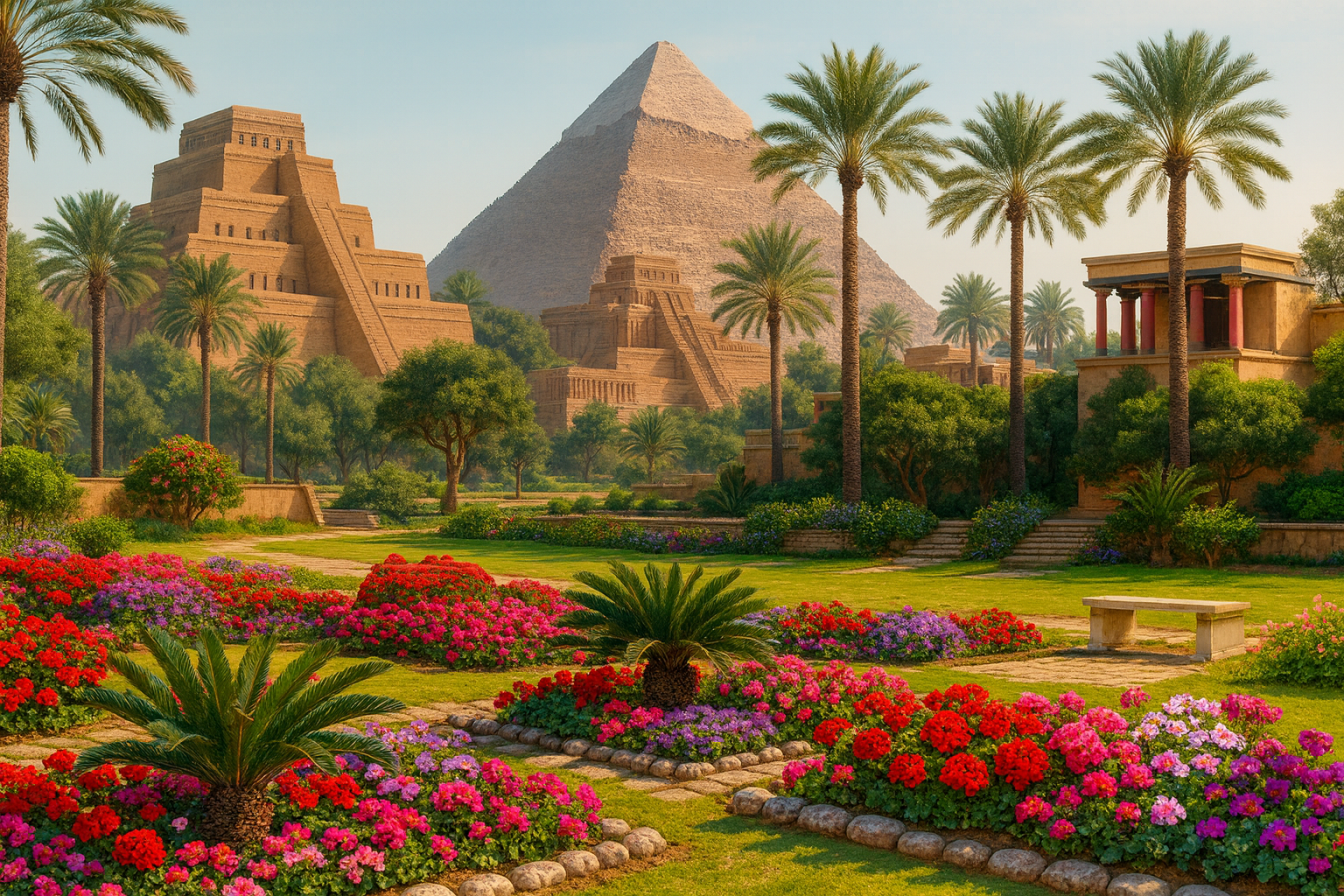Fierce Protector, Divine Mother, and Embodiment of Power
Among the many deities of Hindu mythology, Kali stands out as one of the most enigmatic, powerful, and widely misunderstood figures. Often depicted with a garland of skulls, a blood-red tongue, and a commanding stance atop a slain demon, Kali is the goddess of destruction—but also of transformation, time, and divine protection.
To truly understand Kali is to grasp the duality at the heart of Hindu cosmology: creation and destruction, wrath and compassion, death and rebirth. Far from being a malevolent figure, Kali is revered across India and beyond as a deeply protective, motherly force whose terrifying form hides profound spiritual truths.
Origins in Myth and Scripture
Kali first appears in the Devi Mahatmya (part of the Markandeya Purana, ca. 5th–6th century CE), a foundational Shakta text that celebrates the power of the Divine Feminine. She emerges fully formed from the brow of Durga during a cosmic battle to vanquish the demon Raktabija. This demon had a unique ability—each drop of his blood that touched the ground would birth a clone of himself.
Kali solved the problem in the most fearsome way: she drank his blood before it could fall, devouring his duplicates and ultimately slaying him. Her terrifying appearance—naked, black-skinned, with wild hair and bloodshot eyes—symbolized the limitless, uncontrollable energy needed to conquer evil.
Later texts and traditions expanded Kali’s role, integrating her into the Mahavidyas, the ten wisdom goddesses of Tantric Hinduism, each representing a facet of cosmic reality.
Symbolism: More Than Destruction
Though Kali is often called the “goddess of destruction,” this label oversimplifies her role. In Hindu philosophy, destruction is not inherently negative—it’s a necessary prelude to renewal.
Here’s what Kali symbolizes:
Time and impermanence: The name "Kali" is derived from "Kala" (time). She embodies the truth that all things are subject to time’s power—including the ego.
Liberation (Moksha): By destroying ignorance and illusion, Kali frees souls from the cycle of birth and death.
The dark mother (Shakti): She is the raw, unfiltered energy of the universe—Shakti—both terrifying and nurturing.
Ego death: Kali slays the false self, forcing her devotees to confront their deepest fears and illusions.
Kali’s iconography reinforces these meanings:
Her dark skin represents the cosmic womb—the void from which all creation emerges and to which it returns.
Her garland of skulls and skirt of severed arms symbolize the destruction of the ego and the impermanence of the body.
Her outstretched tongue, often dripping blood, represents shame or embarrassment at realizing her own divine rage—or the all-consuming power of the divine.
Her four arms hold weapons and a severed head, showing both her power to destroy and to liberate.
Worship Practices and Devotion
Kali’s worship varies significantly across India, but she is particularly revered in Bengal, where she is seen not just as a fierce deity, but as a compassionate mother—Ma Kali.
Temples and Festivals
The most famous temple dedicated to her is the Kalighat Temple in Kolkata, one of the Shakti Peethas, sacred sites where parts of the goddess Sati are believed to have fallen.
Kali Puja, celebrated during the new moon of Diwali in Bengal, involves elaborate rituals, chants (mantras), offerings, and sometimes animal sacrifice (though this is now rare and controversial).
Tantric Practices
In Tantric Hinduism, Kali is invoked as the ultimate reality—Brahman in feminine form. Some ascetics and yogis meditate upon Kali in cremation grounds to confront death and transcend fear. Kali becomes the guru, teaching through shock, intensity, and revelation.
Bhakti (Devotional) Traditions
For others, worship is more devotional than esoteric. Ramprasad Sen, an 18th-century Bengali poet-saint, composed deeply emotional songs to Kali, portraying her as a playful, loving mother who guides the devotee through all stages of life and death.
Kali in Modern Culture and Spirituality
Kali’s image has evolved over time, not only in India but globally. She has become a symbol of:
Feminine power and empowerment
Resistance against oppression
Spiritual transformation and healing
Liberation from societal and psychological constraints
While some early colonial accounts misinterpreted Kali as a “goddess of violence” or associated her unfairly with the criminal Thuggee cult, modern scholars and practitioners have reasserted her nuanced, liberating role.
In the West, Kali has been embraced by some New Age and feminist spiritual circles as an archetype of fierce feminine wisdom, though not without controversy over cultural appropriation.
Conclusion: Embracing the Paradox
Kali is not meant to comfort. She is meant to awaken. To worship Kali is to confront your deepest fears, ego, and illusions—and to emerge purified, freed from the cycles that bind you.
She asks for surrender, not in defeat, but in transcendence.
As the poet Ramprasad wrote:
"Is Kali my mother dark or fair?
The Mother I worship is beyond color and form."
In Kali’s worship, destruction is not an end—it’s the beginning of truth.







